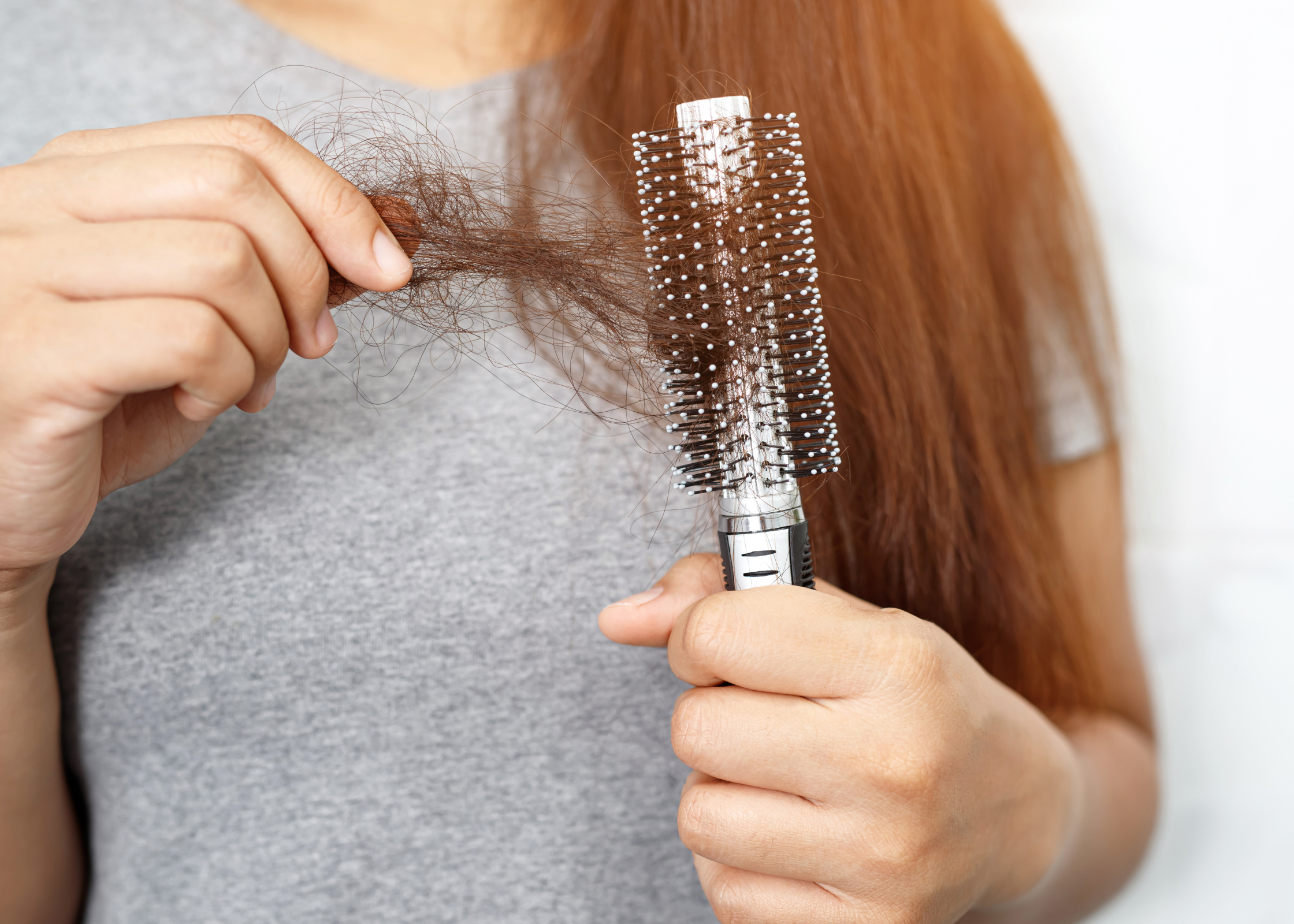If you wear synthetic wigs, you’ve probably dealt with tangling, and you're not alone. Whether you’re getting ready for the day or winding down at home, it can be frustrating to run your fingers through your wig and feel knots forming.
So why does this happen? Synthetic wigs are more prone to tangling than human hair because the fibres don’t contain natural oils. Add in friction from clothing, heat from the environment, and daily movement – and tangles are almost inevitable.
The good news is that while you can’t stop tangling completely, you can reduce it significantly with the right habits, products, and techniques. In this guide, we’ll cover why synthetic wigs tangle, how to care for them daily, how to detangle safely, which products to use, styling tips that help prevent knots, and how to tell when it’s time for a replacement.
Why Do Synthetic Wigs Tangle?
Synthetic wigs tangle for a few key reasons, all of which are linked to the nature of the hair fibres:
- Friction: Synthetic fibres rubbing against your skin, clothes, or accessories – like collars or scarves – creates static and knots.
- Movement and Wind: Walking outside on a breezy day or simply moving your head frequently can cause strands to wrap around each other.
- Dryness: Unlike natural hair, synthetic fibres don’t produce moisture or oil. This means they dry out faster and are more likely to mat.
- Product Build-Up: Using the wrong haircare products or too much of the right ones can leave residue that makes tangles worse.
- Longer Wigs: The longer the wig, the more likely it is to tangle. More surface area means more opportunities for knots to form.
It’s important to remember that tangling is not a sign of poor care, it’s a natural part of wearing a synthetic wig. But there are easy ways to keep it under control.
Daily Habits to Prevent Tangles
Adopting a few good habits can make a big difference in how your synthetic hair looks and feels.
Brush Gently and Regularly
Use a wig brush with looped bristles or a wide-tooth comb. Regular hairbrushes can tug on the fibres and damage the wig cap. Brush once or twice a day if needed and always be gentle. It’s important to brush gently so no damage is done to the wig over time.
Start from the Bottom Up
Never yank a brush from the top of the wig downward. Instead, begin at the tips and slowly work your way up. This reduces breakage and helps you tackle smaller knots first.
Don’t Over-Brush
While daily brushing is helpful, doing it too often can actually wear out the fibres. Stick to a light detangle once or twice a day, especially if you’re not wearing the wig for long periods. Less is sometimes more when it comes to preserving synthetic hair.
Store Your Wig Properly
When not in use, place your wig on a wig stand or keep it in its original box. This helps it hold its shape and prevents fibres from getting flattened or tangled. Avoid tossing it on a surface or stuffing it in a drawer, as this can cause matting and shorten the wig’s lifespan.
Protect Your Wig While Sleeping
It’s best to remove your wig before bed, but if you prefer to wear it, sleep on a silk or satin pillowcase or wrap it in a silk scarf. These materials reduce friction and help preserve the fibres. Cotton pillowcases, by contrast, can create static and tangling that’s tough to brush out later.
How to Detangle a Synthetic Wig
Even with good daily care, tangles will happen. Here’s how to fix them safely:
- Secure the Wig - Place your wig on a wig stand for stability or lay it flat on a clean, dry surface.
- Apply a Wig-Safe Detangling Spray - Use a leave-in conditioner or spray made specifically for synthetic wigs. These reduce static and make the fibres easier to separate.
- Work in Small Sections - Start at the tips and slowly work your way up in sections. Take your time and use your fingers first if needed to loosen bigger knots.
- Be Patient - If you hit a stubborn knot, don’t force it. Spray again and gently tease it apart. Rushing will only damage the wig.
If your wig is heat-resistant, a handheld steamer can help relax the fibres and make detangling easier.
Product Recommendations
Using the right products and tools doesn’t just make detangling less stressful—it also helps protect the fibres and extend the life of your synthetic wig.
Use a Detangling Spray Made for Wigs
Regular hair products can damage synthetic fibres, so it’s important to stick with products formulated specifically for wigs. The Jon Renau Synthetic Fibre Care Kit includes the HD Smooth Detangler, which helps loosen knots gently while protecting against fibre breakage. It’s alcohol-free and safe to use daily.
Choose the Right Comb or Brush
A wide-tooth comb is one of the best tools for detangling synthetic wigs without pulling or tearing the fibres. Our Wide Tooth Comb is lightweight, easy to use, and ideal for both daily touch-ups and post-wash care.
Avoid regular haircare products – they’re not made for synthetic wigs and can cause damage, dryness, or leave residue that worsens tangling. Explore more products you need for your synthetic wig here.
Styling Tips for Reduce Tangles
How you wear your wig can make a big difference in how tangled it gets.
- Low-Friction Styles: Braids, ponytails, and buns help prevent tangling by keeping the hair contained and less likely to rub against your skin or clothes.
- Avoid High-Collar Clothing: Scarves, coats, or chunky jumpers can rub against the nape of your wig and create friction. Consider keeping long styles pulled forward on windy days.
- Go Shorter: If tangles are a constant struggle, a shorter wig may be more practical and easier to maintain.
- Use Heat Cautiously: If your wig is heat-friendly, use a low setting and apply heat protection products designed for synthetic hair. Always follow the manufacturer's guidelines.
When to Replace Your Synthetic Wig
No wig lasts forever, even with the best care. Here are signs it might be time for a new one:
- Persistent matting, especially at the nape, that no longer detangles
- Excessive frizz or split ends
- Visible thinning, bald spots, or heavy shedding
Rotating between two or more wigs can help extend the life of each one, giving you more wear and less stress on any single piece.
Your Path to a Tangle-Free Wig
If your wig gets tangled, you’re not alone. It definitely doesn’t mean you’re doing anything wrong. Synthetic wigs naturally experience some knotting over time, especially with daily wear.
The good news? Small daily habits, the right products, and gentle care can make a noticeable difference in how your wig feels, looks, and lasts. Whether you're brushing more mindfully or storing your wig properly, these little changes all add up.
If you’re ever unsure or need a hand choosing the right care routine, we’re here to help. Feel free to get in touch or browse our wig accessories to find tools and products that work for you.













